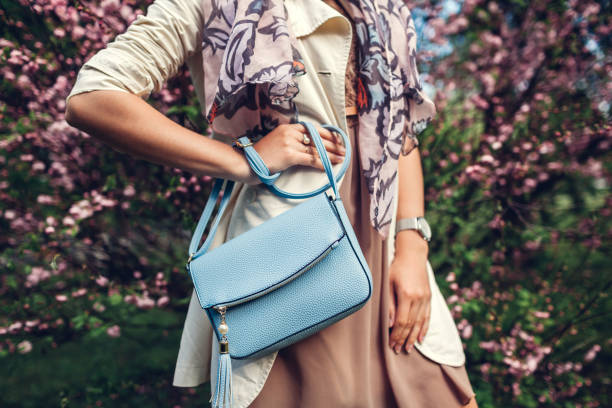
How to Transition Your Wardrobe from Winter to Spring with Ease
Share
As the cold winter months give way to the fresh bloom of spring, our wardrobes need a transition to match the changing weather. Instead of completely overhauling your closet, a few strategic swaps and layering techniques can help you effortlessly shift from winter coziness to spring freshness. This guide will help you transition your wardrobe with ease, ensuring comfort, style, and functionality throughout the seasonal shift.
Step 1: Declutter and Store Winter Wear
Before you start incorporating spring fashion, decluttering is key. Pack away heavy winter coats, bulky sweaters, and thick scarves to make space for lighter, breathable fabrics. Opt for vacuum-sealed bags or storage boxes to keep winter essentials safe and organized until next year. However, keep a few versatile pieces like light wool sweaters and jackets for unpredictable spring chills.
Step 2: Introduce Lightweight Layers
Spring weather can be unpredictable, with chilly mornings and warm afternoons. Layering is the best way to stay comfortable throughout the day. Here’s how:
-
Swap thick wool sweaters for lightweight cardigans, cotton pullovers, and linen tops.
-
Replace heavy coats with trench coats, denim jackets, or lightweight blazers.
-
Layer a turtleneck under a dress or wear a lightweight sweater over a shirt for warmth without bulk.
Step 3: Swap Dark Winter Shades for Lighter Colors
Winter wardrobes often consist of deep, dark hues like black, navy, and burgundy. Spring calls for a fresher palette, including pastels, soft neutrals, and bright floral prints. Incorporate colors like mint green, blush pink, sky blue, and beige to bring a spring-ready vibe to your outfits.
Step 4: Transition Footwear Smartly
Winter boots are great for snow and rain, but as temperatures rise, switch to lighter footwear options. Consider these choices:
-
Swap knee-high boots for ankle boots or loafers.
-
Incorporate sneakers, espadrilles, or ballet flats for casual comfort.
-
Introduce open-toe shoes like sandals or mules as the weather gets warmer.
Step 5: Incorporate Spring Fabrics
Fabrics play a crucial role in seasonal dressing. Heavy wool, fleece, and thick knits should be replaced with breathable, lightweight options like:
-
Cotton
-
Linen
-
Chambray
-
Silk blends
These fabrics allow air circulation, keeping you cool during warm afternoons while still offering coverage for cooler mornings and evenings.
Step 6: Mix and Match Transitional Pieces
Instead of buying an entirely new wardrobe, mix winter and spring pieces for a seamless transition. Some great combinations include:
-
A floral dress paired with a leather jacket or light cardigan.
-
A midi skirt with a turtleneck and ankle boots.
-
Jeans with a breezy blouse layered under a blazer.
Step 7: Accessorize for Spring
Accessories can instantly transform an outfit and set the tone for a new season. Here’s how to update your look:
-
Swap thick wool scarves for lightweight silk or cotton scarves.
-
Replace beanies with wide-brim hats or stylish headbands.
-
Opt for colorful, statement jewelry to add a fresh touch.
-
Choose a crossbody bag or a straw tote instead of heavy leather handbags.
Final Thoughts
Transitioning your wardrobe from winter to spring doesn’t have to be overwhelming. By making gradual changes, incorporating versatile pieces, and focusing on layering, you can smoothly embrace the season’s shift. Prioritize comfort and style while being mindful of unpredictable weather, and you’ll be ready to step into spring with confidence.
FAQs
1. When should I start transitioning my wardrobe from winter to spring?
The best time to start is in late February or early March when temperatures begin to rise but still fluctuate.
2. Can I still wear some winter pieces in spring?
Yes! Lightweight sweaters, ankle boots, and layering jackets can be carried into spring for a stylish transition.
3. What are some must-have pieces for spring?
Trench coats, floral dresses, pastel blouses, light cardigans, and breathable fabrics like cotton and linen are essential for spring fashion.
4. How do I store my winter clothes properly?
Use vacuum-sealed bags, storage bins, or fabric garment bags to keep winter items safe from moisture and pests.
5. What’s the best way to layer outfits for unpredictable spring weather?
Start with a breathable base layer, add a mid-layer like a sweater or blouse, and finish with a lightweight jacket or trench coat.
6. Are ankle boots still appropriate for spring?
Yes! Ankle boots pair well with spring dresses, skirts, and jeans, making them a great transitional footwear option.
7. What colors are trending for spring fashion?
Pastels, soft neutrals, floral prints, and light blues, greens, and pinks are trending for spring 2025.
8. How can I transition my work wardrobe for spring?
Swap heavy blazers for lightweight ones, choose breathable fabrics, and incorporate light-colored tops and skirts into your work outfits.
9. Can I still wear leather jackets in spring?
Absolutely! A leather jacket can be a stylish outerwear option for cooler spring days when paired with lighter fabrics.
10. How do I transition my accessories for spring?
Opt for lighter scarves, colorful jewelry, pastel handbags, and wide-brim hats to embrace the spring season effortlessly.
